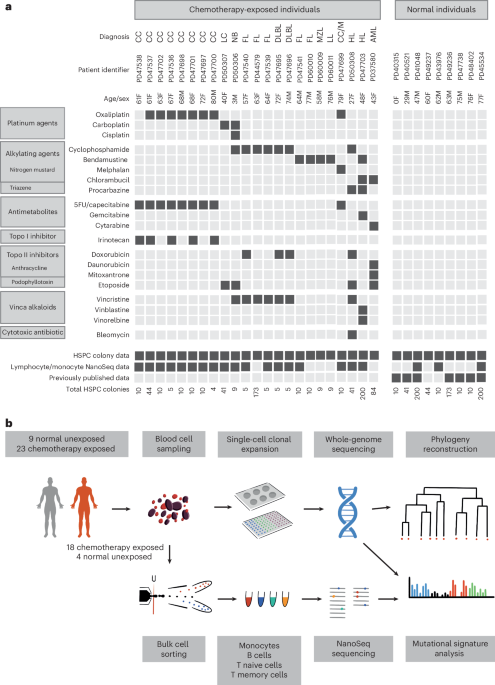Risk of myocardial infarction and stroke following microbiologically confirmed urinary tract infection: a self-controlled case series study using linked electronic health data
Risk of myocardial infarction and stroke following microbiologically confirmed urinary tract infection: a self-controlled case series study using linked electronic health data
The inflammatory response from acute infection may trigger cardiovascular events. We aimed to estimate associations between microbiologically confirmed urinary tract infections (UTIs) and first acute myocardial infarction (MI) and stroke.
We used a self-controlled case series, with risk periods 1–7, 8–14, 15–28 and 29–90 days after UTI. Included individuals experienced the outcome and exposure of interest and acted as their own controls.
We used individually linked general practice, hospital admission and microbiology data for the population of Wales held by the Secure Anonymised Information Linkage databank.
Included individuals were Welsh residents aged over 30 years with a record of a hospital admission for MI or stroke (outcomes) and evidence of a microbiologically confirmed UTI (exposure) during the study period of 1 January 2010 to 31 December 2020.
The primary outcome was acute MI or stroke identified using the International Classification of Disease V.10 codes from inpatient diagnoses recorded in the Patient Episode Database for Wales. We used Poisson regression to estimate incidence rate ratios (IRRs) and 95% CIs for MI and stroke during predefined risk periods, compared with baseline periods.
During the study period, 51 660 individuals had a hospital admission for MI, of whom 2320 (4.5%) had 3900 microbiologically confirmed UTIs, and 58 150 had a hospital admission for stroke, of whom 2840 (4.9%) had 4600 microbiologically confirmed UTIs. There were 120 MIs during risk periods and 2190 during baseline periods, with an increased risk of MI for 1–7 days following UTI (IRR 2.49, 95% CI (1.65 to 3.77)). There were 200 strokes during risk periods and 2640 during baseline periods, with an increased risk of stroke for 1–7 days following UTI (IRR 2.34, 95% CI (1.61 to 3.40)).
UTI may be a trigger for MI or stroke. Further work is needed to understand mechanisms and test interventions to reduce the risk of cardiovascular events among people with UTIs in primary care.
Data may be obtained from a third party and are not publicly available. The data used in this study are available in the SAIL Databank at Swansea University, Swansea, UK, but as restrictions apply, they are not publicly available. All proposals to use SAIL data are subject to review by an independent Information Governance Review Panel (IGRP). Before any data can be accessed, approval must be given by the IGRP. The IGRP carefully considers each project to ensure the proper and appropriate use of SAIL data. When access has been granted, it is gained through a privacy-protecting trusted research environment (TRE) and remote access system referred to as the SAIL Gateway. SAIL has established an application process to be followed by anyone who would like to access data via SAIL at https://www.saildatabank.com/application-process. The SAIL Databank IGRP approved the study, project approval number 0972. The code for preparing the data is available on GitHub: https://github.com/SwanseaUniversityDataScience/MISSOURI.
https://creativecommons.org/licenses/by/4.0/
This is an open access article distributed in accordance with the Creative Commons Attribution 4.0 Unported (CC BY 4.0) license, which permits others to copy, redistribute, remix, transform and build upon this work for any purpose, provided the original work is properly cited, a link to the licence is given, and indication of whether changes were made. See: https://creativecommons.org/licenses/by/4.0/.
If you wish to reuse any or all of this article please use the link below which will take you to the Copyright Clearance Center’s RightsLink service. You will be able to get a quick price and instant permission to reuse the content in many different ways.
Myocardial infarction (MI) and stroke are leading causes of mortality.1 Alongside well-established modifiable risk factors such as hypertension, low-density lipoprotein cholesterol and tobacco smoke,2 there is increasing interest in the role of acute infection in the pathogenesis of cardiovascular disease.3 Excess mortality from cardiovascular disease during influenza epidemics was first reported in the 1930s,4 but more robust associations between acute infections and acute cardiovascular events were only appreciated over the past few decades.3 Three main mechanisms have been proposed. First, the inflammatory response from acute infection may destabilise atherosclerotic plaques. Second, the prothrombotic, procoagulant state associated with acute infection may increase the risk of thrombosis at the site of plaque disruption. Third, tachycardia driven by inflammation and fever may cause ‘demand ischemia’ if the metabolic demands of the myocardial cells exceed oxygen supply.3
Most associations between acute infection and cardiovascular disease arose from observational studies of acute respiratory tract infections and acute MI.3 5–11 The risk of MI increases during and after a respiratory tract infection, and the magnitude varies according to organism.8 Increased short- and long-term risk of cardiovascular events has also been reported for pneumonia, sepsis, bacteraemia and COVID-19.12–21 However, associations with other infections, particularly those with bacterial aetiology, have been less well studied. Urinary tract infections (UTIs) are one of the most common bacterial infections seen in primary care,22 with 37% of women reporting having had at least one UTI in their lifetime and 29% experiencing more than one.23 Pathogens in the urinary tract are recognised by the innate immune system and induce a rapid and robust pro-inflammatory response,24 which could plausibly trigger a cardiovascular event by any of the three mechanisms described above. To our knowledge, only one study has examined the association between UTIs and acute MI and stroke.9 This study used electronic health record data from the General Practice Research Database and ascertained UTI from clinical codes reported by general practitioners in UK general practice. This raises questions about diagnostic certainty and misclassification, especially given data from multicountry cohort studies showing that roughly two-thirds of women with UTI suspected in primary care had no evidence of bacteria on microbiological culture.25
Determining associations between UTI and MI or stroke has potentially important clinical implications and could justify subsequent clinical trials of preventative therapy, such as antiplatelet drugs prescribed alongside antibiotic treatment. Therefore, this study aimed to estimate associations between microbiologically confirmed UTIs and MI or stroke using a self-controlled case series (SCCS) design and linked population-scale primary care and microbiology data.
Study procedures are described in detail in the published study protocol.26 We used an SCCS design where individuals act as their own controls, inherently controlling for time-invariant within-subject confounders, even when these are unmeasured or unknown.27 28 The SCCS design starts with individuals who have experienced an outcome of interest and aims to answer the question ‘when did this outcome occur?’ rather than ‘how often did this outcome occur?’. The incidence of each outcome is calculated for prespecified risk periods and compared with baseline (control) periods. The unit of measurement is person-days. The model assumptions, how they apply to our study, and the solutions to violations of the assumptions are given in online supplemental e-table 1.
For this SCCS, the source population were individuals with good quality data linkage within the Secure Anonymised Information Linkage (SAIL) Databank, an ISO27001 certified trusted research environment (TRE) for anonymised individual-level population-scale data.29 Good quality linkage is defined as individuals for whom either (1) NHS number passes check digit test, (2) surname, first name, postcode, date of birth and gender code match exactly to Welsh Demographic Service or (3) fuzzy matching probability ≥0.9. We included individuals who were Welsh residents, aged 30–100 years, with a hospital admission record for MI or stroke (recorded as a primary or secondary diagnosis in hospital data). We included only the first acute MI or stroke, occurring during the observation period of 1 January 2010 to 31 December 2020. We chose a lower age bound of 30 years to reduce the chance of including MIs and strokes due to congenital or other non-atherosclerotic causes.
We used the SAIL Databank to access the following linked data: Welsh Longitudinal General Practice (WLGP) data, Patient Episode Database for Wales (PEDW) and the Welsh Results Reporting Service (WRRS). The WLGP data contain anonymised individual-level data from people registered with 86% of general practices in Wales, equating to longitudinal data for 2∙6 million people.30 It includes demographic data, acute and chronic clinical diagnoses and prescription data. The PEDW data contain International Classification of Disease Version 10 (ICD-10)-coded diagnoses for individuals admitted to any Welsh hospital and Welsh residents treated in English hospitals.31 The WRRS data include all tests requested from primary and secondary care NHS Wales organisations processed and analysed in NHS Wales laboratories, including requests for urine microscopy and culture.32 This data is generated using the same Standard Operating Procedure, as all Welsh microbiology laboratories are part of the same network. Data availability across these data sources varies according to when clinical information systems began, with data quality and completeness improving over time (see online metadata or online supplemental e-table 2 for more details).30–32
The exposure of interest was incident UTIs. To be defined as ‘incident’, a UTI required a 7-day period between the earliest date of that episode and the latest date of a previous episode. UTIs within 7 days of each other were grouped as single episodes, with a hierarchical approach used to assign the date of exposure and determine which analysis that episode would contribute to (see online supplemental e-figure 1). To ascertain microbiologically confirmed UTIs, we developed definitions that reflected the Public Health Wales Microbiology Division’s standard operating procedure for urine investigation.33 The standard operating procedure is based on the Standards for Microbiology Investigations developed by the UK Health Security Agency.34 These procedures are followed by NHS microbiology laboratories across Wales. For each definition, the data sources required and the clinical scenario represented are summarised in table 1, and relevant code lists are provided in online supplemental tables 3–5.
Table 1
Definitions of urinary tract infection for primary and secondary analyses
In our primary analysis, an individual was regarded as being exposed to a UTI if all of the following events occurred within a 7-day window:
The primary analysis represents the clinical scenario of a GP clinically suspected and microbiologically confirmed UTI. For all analyses, the date of a UTI was defined as the earliest date of occurrence of any of the events necessary for each different UTI definition. Therefore, in the primary analysis, the UTI date was the earliest of the following events: UTI-related diagnostic code, antibiotic prescription and supporting urine culture specimen collection date.
We undertook secondary analyses where we estimated the risk of MI and stroke among individuals with a clinically suspected UTI with mixed growth on culture. This analysis was included to address the uncertain clinical significance of mixed bacterial growth in an individual with symptoms of UTI. We also estimated the risk of MI and stroke among individuals with a clinically suspected and treated UTI (no microbiology) and among individuals where UTI was clinically suspected and treated but not supported by microbiology (no bacterial growth) (table 1).
Outcomes of interest were acute MI or stroke identified using ICD-10 codes (online supplemental e-table 5) from inpatient diagnoses recorded in PEDW. We only included the first acute MI or stroke diagnosis in the observation period. Individuals meeting the primary analysis criteria for UTI exposure were selected from cases of MI or stroke.
A diagrammatic representation of observation time for individuals in the SCCS is given in figure 1. Based on previous research,9 our predefined risk period (risk of MI or stroke following a UTI) was 0–90 days, with day 0 being the date of the UTI (figure 1, scenario 1). Individuals could have more than one UTI during the observation period and, therefore, more than one 90-day risk period. Where risk periods overlapped (figure 1, scenario 2), the later period took precedence and the earlier period was shortened. We included a prerisk period of 7 days before the UTI diagnosis to allow for the situation where an individual had a UTI for several days prior to consultation. This ensured that MIs or strokes in this period were not erroneously attributed to the baseline period. Baseline periods were all other times aside from risk and prerisk periods.
We described the cohort of individuals aged 30–100 years who were resident in Wales and experienced an MI or stroke between 1 January 2010 and 31 December 2020 with respect to age, sex, history of diagnoses and prescription drugs prior to their MI or stroke, smoking status, Welsh Index of Multiple Deprivation V.201935 and electronic Frailty Index. Characteristics were ascertained from WLGP data, with the cohort having data available for a median of 13 years (25th to 75th centiles 8–16 years) prior to cohort entry. From this cohort of individuals with MI or stroke, those who also experienced at least one UTI were included in the SCCS.
We used conditional logistic regression to estimate incidence rate ratios (IRRs), with 95% CIs, for the risk of acute MI or stroke in prerisk and risk periods compared with baseline periods. The SCCS design inherently controls for time-invariant covariates such as sex. We adjusted each model for age, season and year of UTI diagnosis. Age and season are associated with the incidence of UTI, MI and stroke. The year of UTI diagnosis was included because diagnostic and coding practices may have changed over time as a result of guidance and antibiotic stewardship policies. We reported crude and adjusted IRRs for the risk of MI or stroke in the prerisk period and the risk period (at intervals of 0, 1–7, 8–14, 15–28 and 29–90 days after UTI), compared with baseline periods.
We undertook several predefined sensitivity analyses to assess the robustness of our findings:
We also explored differential effects in subgroups in the primary analysis based on bacterial organism (Escherichia coli (E. coli) vs other organisms) and history of diabetes (given its potential role as a risk factor for both UTI and MI/stroke).36 37
All study data were held within the SAIL Databank. Data access, research permissions and approvals were obtained from the SAIL independent Information Governance Review Panel (IGRP), project number 0972. Analyses were conducted within the SAIL TRE with strict disclosure control processes in place. Only aggregated outputs were approved for release to ensure individuals were not identified (all counts in this paper are rounded to the nearest 10; counts less than five were suppressed and denoted as such). Analyses were undertaken in R V.4.1.3, using the SCCS package V.1.5.
We developed this research in collaboration with members of the Wales Centre for Primary and Emergency Care Research Service Users group (SUPER) and the SAIL consumer panel. We consulted SUPER and the SAIL consumer panel regarding all stages of this research, including discussion of analysis plans, review of findings and plans for dissemination (eg, public facing outputs). We extended our subgroup analysis to include individuals with diabetes in response to discussions with the SAIL consumer panel members.
We identified 51 660 individuals with an ICD-10 code for MI and 58 150 with an ICD-10 code for stroke (figure 2). MI cases were 63% male. Median age was 77 years (25th to 75th centiles 66–85 years) for females and 69 years (25th to 75th centiles 59–78 years) for males. Stroke cases were 49% male, with median ages of 79 years (25th to 75th centiles 69–87 years) for females and 74 years (25th to 75th centiles 64–82 years) for males. Of these 51 660 individuals with MI and 58 150 with stroke, 2320 and 2840, respectively, also had at least one clinically suspected and microbiologically confirmed UTI during their observation period and were included in the primary analysis. The number of individuals and the number of exposures to UTI included in each analysis are given in online supplemental e-table 6. 1560 (67%) individuals with MI and 1990 (70%) with stroke had just one UTI during the observation period. 410 (18%) with MI and 460 (16%) with stroke had two UTIs, and 50 (2%) with MI and 70 (2%) with stroke had more than five UTIs (online supplemental e-table 7). The number of UTIs prescribed each antibiotic in the primary analysis is given in online supplemental e-table 8. A description of the characteristics of individuals experiencing both UTI and either MI or stroke is given in table 2. All data were complete, except ethnicity data. 68% of stroke cases and 55% of MI cases had no ethnicity recorded.
Figure 2
Selection of myocardial infarction (MI) and stroke cases. *Individuals appear and are counted in both the stroke and MI datasets if they had both an MI and a stroke event within the study period. All counts are rounded to the nearest 10. PEDW, Patient Episode Database for Wales; UTI, urinary tract infection; WDSD, Welsh Demorgraphic Service Dataset WLGP, Welsh Longitudinal General Practice.
Table 2
Characteristics of cases of stroke and myocardial infarction, identified with a urinary tract infection
Myocardial infarction
In the primary analysis, 2320 individuals with MI had 3900 microbiologically confirmed UTIs. Fewer than five MIs occurred in the prerisk period, 120 MIs occurred in the risk period and 2190 occurred during baseline periods. Total observation time was 27 300 days for the prerisk period, 315 530 days for the risk period and 8 102 743 days for baseline periods. The risk of MI increased in the first 7 days following UTI (adjusted IRR 2.49, 95% CI (1.65 to 3.77)). There was no statistically significant increase in risk 8–14 days after UTI, but a further period of increased risk during 15–28 days after UTI (adjusted IRR 1.60, 95% CI 1.10–2.33) (figure 3 and table 3).
Table 3
Crude and age-, season- and year-adjusted incidence rate ratio (IRR) for first myocardial infarction (n=2320) and first stroke (n=2840) in periods after urinary tract infection compared with baseline time
For stroke, 2840 individuals had 4600 microbiologically confirmed UTIs. 10 strokes occurred in the prerisk period, 200 in the risk period and 2640 during baseline periods. Total observation time was 32 179 days for the prerisk period, 374 939 days for the risk period and 9 620 009 days for baseline periods. The risk of stroke increased in the first 7 days following UTI (adjusted IRR 2.34, 95% CI (1.61 to 3.40)). There was no statistically significant increase in risk 8–28 days after UTI, but a further period of increased risk during 29–90 days after UTI (adjusted IRR 1.26, 95% CI 1.05 to 1.52) (figure 3 and table 3).
Among individuals with a clinically suspected UTI with mixed bacterial growth on culture, the adjusted IRR for MI in the first 7 days following UTI was 1.26 (95% CI (0.52 to 3.05)) and for 8–14 days after UTI was 2.07 (95% CI 1.03–4.15). Among individuals with clinically suspected UTI where there was no urine culture, the risk of MI was greater in the first 7 days after consultation (IRR 1.83, 95% CI (1.54 to 2.18)). The risk of MI was also elevated among those with clinically suspected UTI with no bacterial growth on culture (IRR 3.69, 95% CI (2.28 to 5.96)) (figure 4 and online supplemental e-tables 9–11). The risk of stroke was greater in the 7 days after UTI in all secondary analyses (figure 4 and online supplemental e-tables 9–11).
The interaction between UTI exposure and infection with E. coli was statistically significant (p value <0.0001 for both MI and stroke). The effect of infection with E. coli compared with other organisms was not consistent for MI and stroke: the magnitude of risk for MI was smaller for E. coli (IRR 2.55 (95% CI 1.37 to 4.76) for E. coli, 3.54 (95% CI 1.58 to 7.91) for other organisms), but the risk of stroke was higher for E. coli (IRR 3.06 (95% CI 1.87 to 5.00) for E. coli, 2.34 (95% CI 1.05 to 5.23) for other organisms). The interaction between UTI exposure and diabetes status was not statistically significant for either MI (p value 0.329) or stroke (p value 0.511) (online supplemental e-table 12).
The results remained robust to the alterations of assumptions made in our sensitivity analyses. Adjusted IRRs were lower than crude IRRs for all analyses, with age being the main factor driving the attenuation of risk. Full results of the secondary and sensitivity analyses are given in online supplemental material.
In this SCCS, we found that microbiologically confirmed UTIs were associated with an increased risk of MI and stroke. The risk of MI was highest in the first 7 days after UTI, with a further period of increased risk 15–28 days after UTI. The risk of stroke was also highest in the first 7 days after UTI and was raised 29–90 days after UTI. In analyses including individuals with no urine culture, mixed growth on culture and no growth on culture, we found an increased risk of MI and stroke following clinically suspected UTI, though the mixed growth group had a delay before the observed increase in risk of MI. The group with no growth on culture had a marked increase in risk of both MI and stroke.
We used microbiology data to increase the reliability of exposure ascertainment. This is a key strength of this study and reduces the risk of misclassification in the primary analysis. It has also allowed an exploration of the implications of different microbiology definitions. To our knowledge, ours is the only study which uses microbiologically confirmed UTI to study the risk of MI or stroke following UTI. All microbiology laboratories across Wales use standardised procedures, meaning microbiological data are comparable across laboratories. We used the SCCS methodology, which meant that unmeasured time-invariant confounding from important differences between individuals who do and do not experience UTIs was eliminated. Measured and unmeasured characteristics that vary between individuals were inherently controlled. We also controlled for the effects of age, season and year. However, the findings could still be affected by residual confounding, such as from measurement error in adjusted covariates. A potential weakness of our approach is that we do not know the precise date of the onset of UTI, only the date of diagnosis. However, individuals are unlikely to be experiencing symptoms for more than a few days before seeking medical care,25 and this time period is included in the prerisk period to prevent erroneous attribution of MI or stroke during this time to baseline periods. We had no information on UTIs for which people did not seek medical care. We may also have unrecorded UTIs in WRRS prior to 2015 due to differences in recording practices. Any cardiovascular event subsequent to an unrecorded UTI would be assigned to baseline time, biasing our estimates towards the null.
The use of routine data means that results can be sensitive to the precise list of codes used for definitions of MI, stroke and UTI. We conducted a range of sensitivity analyses to examine this and found our results were robust to different definitions and to the choice of antibiotic. Secondary analyses are exploratory, and there is uncertainty in estimates due to small numbers of events, but an increase in risk of MI or stroke after UTI is still observed. The effect estimate for stroke did not return to baseline within 90 days, but the magnitude of incidence rates after 28 days is small, and even after taking this elevation into account, the increased rates seen immediately after UTI are significantly raised. It is possible that individuals were experiencing another source of inflammation at the same time as UTI, which could have contributed to the risk of MI or stroke. However, we believe the number of individuals affected by this to be relatively small.
The link between respiratory tract infections and MI or stroke has been well established.5–11 16–19 38 Studies of influenza, respiratory syncytial virus, pneumonia and other respiratory viruses have found an increased risk of acute MI in the 1–3 days following a respiratory tract infection, with the effect sizes ranging from a threefold to sixfold increase according to the infecting organism.5–11 Several studies have also observed an association between pneumonia and acute cardiovascular events (including MI and stroke).16–19 38 The link with UTI has been less well studied. Smeeth et al estimated an IRR of 1.66 for MI and 2.72 for stroke in the 1–3 days after UTI.9 Our results are in broad agreement with this: our secondary analysis with no urine culture has a similar definition to Smeeth et al and found an IRR of 1.83 for MI and 2.43 for stroke in the 1–7 days after UTI. While the effect sizes are smaller than those typically found for respiratory tract infections, incidence rates infer substantially increased risk post-UTI compared with baseline periods.
The mechanism behind the increased risk of MI and stroke includes destabilisation of atherosclerotic plaques by the inflammatory response, an increased risk of thrombosis and an increased heart rate contributing to demand ischaemia.3 Future work into how these mechanisms impact each of the groups of individuals examined in this study (microbiologically confirmed UTI; mixed growth on culture; no microbiology and no growth on culture) would provide a valuable aid to understanding, and preventing, the increased risk of cardiovascular events. The mechanism behind the increased risk is especially unclear for individuals with no growth on culture, where UTI is clinically suspected, but microbiology does not support the diagnosis and warrants further investigation. The increased risk in this group could be due to false negative culture results, perhaps due to atypical pathogens, low counts of bacteria or cultures taken after antibiotic treatment was started. It could be that early signs of MI or stroke are misdiagnosed as UTI, or it could be that it is the inflammatory response from the illness, which presents like an infection syndrome, that is important, rather than the specific infection itself. A better understanding of the mechanisms could lead to preventative treatment for at-risk individuals when diagnosed with UTI and fewer cardiovascular events. Recent work has set a precedent for this; the NIHR HTA-funded ASPECT trial is currently randomising people hospitalised with pneumonia to aspirin versus placebo to assess the effect on major adverse cardiovascular events.39
We observed an increased risk of MI and stroke immediately following a UTI. This finding was robust to a range of secondary and sensitivity analyses and warrants further work to better understand mechanisms and inform trials of primary prevention.
Data may be obtained from a third party and are not publicly available. The data used in this study are available in the SAIL Databank at Swansea University, Swansea, UK, but as restrictions apply, they are not publicly available. All proposals to use SAIL data are subject to review by an independent Information Governance Review Panel (IGRP). Before any data can be accessed, approval must be given by the IGRP. The IGRP carefully considers each project to ensure the proper and appropriate use of SAIL data. When access has been granted, it is gained through a privacy-protecting trusted research environment (TRE) and remote access system referred to as the SAIL Gateway. SAIL has established an application process to be followed by anyone who would like to access data via SAIL at https://www.saildatabank.com/application-process. The SAIL Databank IGRP approved the study, project approval number 0972. The code for preparing the data is available on GitHub: https://github.com/SwanseaUniversityDataScience/MISSOURI.
Not applicable.
This study makes use of anonymised data held in the Secure Anonymised Information Linkage (SAIL) Databank. We would like to acknowledge all the data providers who make anonymised data available for research.













